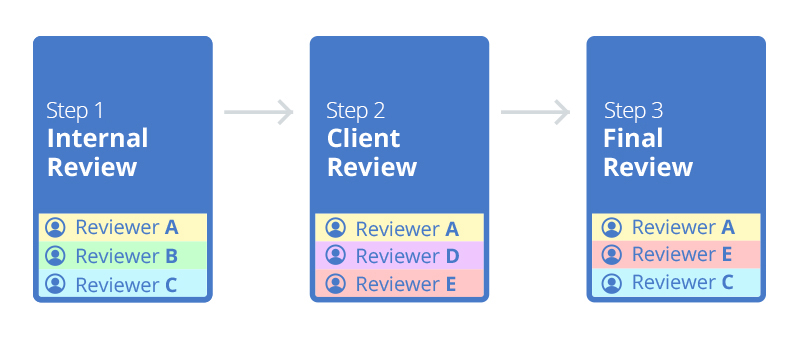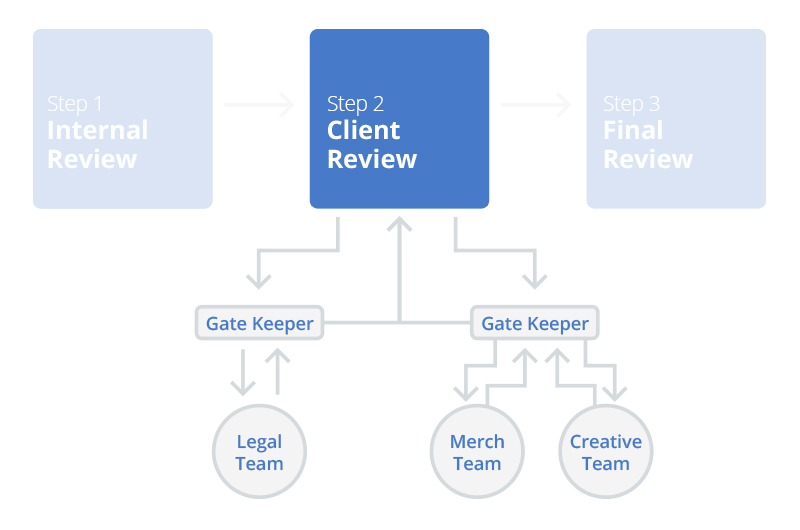.png?width=300&height=300&name=annotation-worflow%20(1).png)
The Annotation Flow Management (AFM) feature allows companies to cater to the most advanced and sophisticated review cycles and can get deployed in single or multi-step workflows.
AFM is unique to Aproove Work Management and gives unparalleled granular control of your review process within a step. The viewing of annotations gets controlled by a hierarchy of groups (called Schemas). Each group contains users with different permissions and every user of the same group is able to see each others notes.
Below is a diagram of a typical 3 step approval workflow not using AFM.
At each step, the different reviewers access the proof applying notes and comments. Each reviewer can see the other reviewer/s notes and comments in the various review stages. This could be a problem if, for example, you want to have internal comments before you send the proof to your client and do not wish those internal comments to be visible.


In this example, "Step 2 Client Review" has three different departments that need to look at the proof, but all with different objectives. Each department is effectively its own review stage within "Step 2".
In this example, the proof needs to be seen by the legal team. The legal team does not want (or need) to view any comments or annotations from anyone outside the legal team.
The legal team can mark up the proof and have discussion threads, which get contained inside the legal team. The Legal Team's assigned Gatekeeper can then decide what annotations and comments get pushed back into the proof and what ones get discarded.
On the right side of the diagram, you have another Gatekeeper. This Gatekeeper is looking after both the Merchandise and Creative teams. Neither team will see each other's markup until the Gatekeeper promotes the selected notes and comments.
All three departments are working at the same time, and this process is not linear, which saves vast amounts of time by working in parallel.
Another common area where AFM is beneficial is when an agency sends a proof to an external client. The agency usually treats this as a single step in the agency workflow, but typically, the client has multiple teams that need to review.
With AFM, the agency can allow the client to work in a silo across as many departments as necessary before the client promotes the chosen comments. This powerful feature will help the agency's customers have a better and more efficient Review and Approval experience.
AFM effectively gives "Private meeting rooms" controlled by gatekeepers within one or multiple stages.